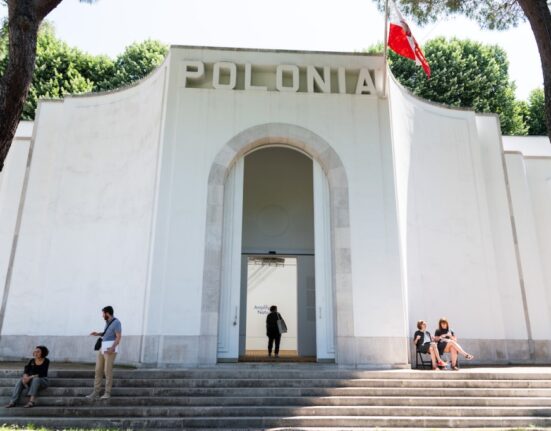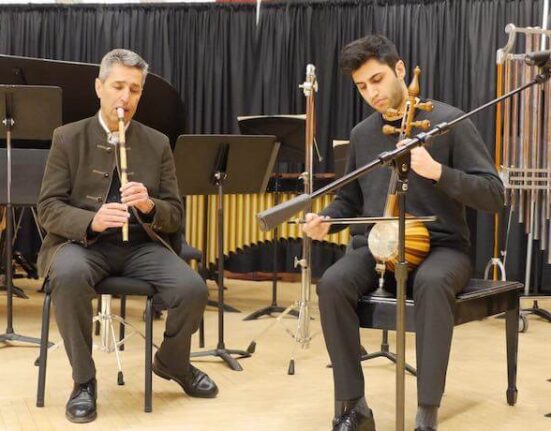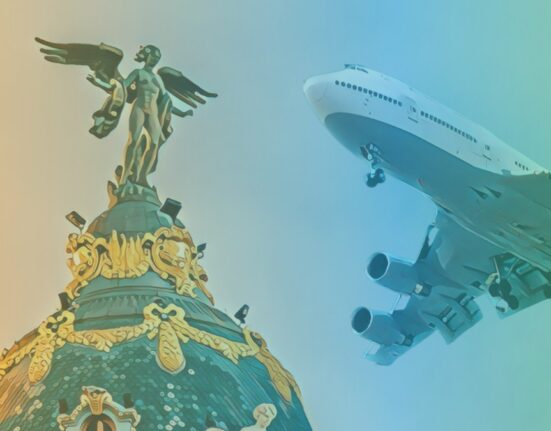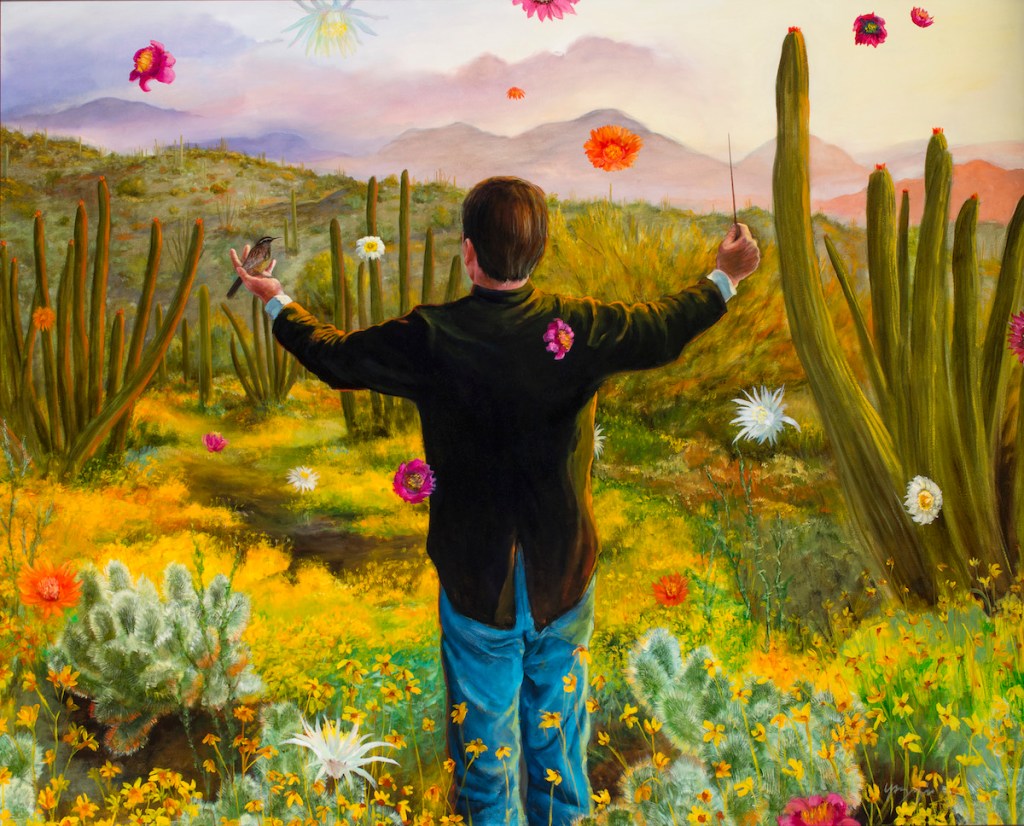
©2003 Steven J. Yazzie/Photo Craig Smith/Courtesy Heard Museum
A quiet revolution is taking place within the walls of the National Gallery of Art, where a group of nearly 50 Native American artists has assembled to expose the land that constitutes Washington, D.C.—and most other parts of this country—as stolen.
On the top floor of the museum’s East Building, visitors to the special exhibition galleries encounter Native Host for Washington, D.C. (2022), a sculpture by Edgar Heap of Birds (Cheyenne and Arapaho). The work recalls the kind of sign one might see on the side of a road leading to, say, the nation’s capital—except that, in this case, rather than confirming that the viewer has come to the right place, it reorients the very site in which it is set. The words WASHINGTON D.C. are reversed; beneath them is more text, TODAY YOUR HOST IS PISCATAWAY, referring to the Native Americans who lived here before European colonists forced them to vacate.
The dislocation continues in the galleries, where a 7-and-a-half-foot-wide painting by Julie Buffalohead (Ponca Tribe of Oklahoma) shows a concrete barrier with razor wire recalling the means used to quell Native activists during the 2016 Dakota Access Pipeline protests at Standing Rock. YOU ARE ON INDIAN LAND the barricade reads. Rather than officers in SWAT gear, it features bunnies with an inverted American flag and a wolf in a tutu waving a starred wand.
Both pieces are part of “The Land Carries Our Ancestors,” a vibrant group show organized with grace by artist Jaune Quick-to-See Smith (Citizen of the Confederated Salish and Kootenai Nation). Smith has not endeavored to do a wide-ranging survey of contemporary Native American art. Instead, she focused on one slice of it: art dealing with the natural environment and Indigenous communities’ relationships to it.

Edgar Heap of Birds, Native Host for Washington D.C., 2022.
©Edgar Heap of Birds/Photo Shanna Ketchum Heap of Birds/Collection of the artist
Stylistically, the dozens of artworks here do not form a monolith. Within the same gallery are beaded Converses by Kiowa artist Teri Greeves alongside sculptures resembling mirrored shields by Cannupa Hanska Luger (Mandan/Hidatsa/Arikara/Lakota). Neither work depicts the land itself, but Smith asserts that both have a relationship to it—the Greeves kicks because they have touched the ground, the Luger shields because similar objects played a role in the Standing Rock protests.
There are, of course, landscapes too. Kay WalkingStick, a member of the Cherokee Nation of Oklahoma who is also of European descent, has a beautiful one called Ute’s Homelands (2022); it depicts a sprawling, lilac-colored mountain range, along with patterns derived from Ute beadwork overlaid on a river running through a valley. It’s an acknowledgment that these peaks once belonged to the Utes before American settlers shunted them to reservations.
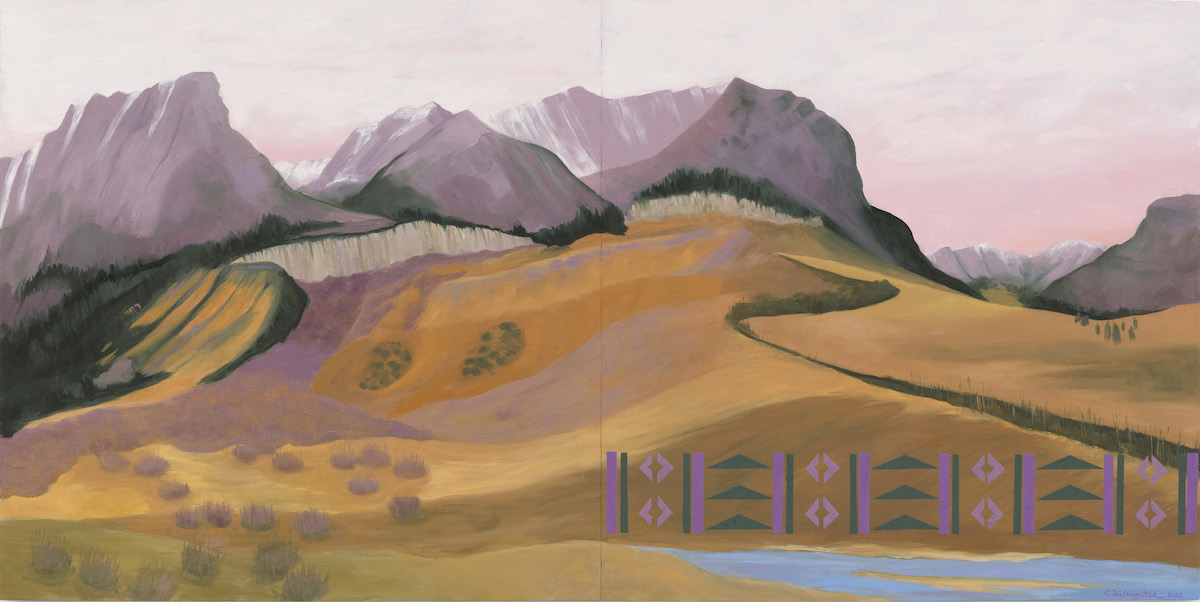
Kay WalkingStick, Ute’s Homelands, 2022.
©Kay WalkingStick/Photo JSP Art Photography/Courtesy the artist and Hales Gallery, New York and London
That painting rectifies a painful history, as does Edward Curtis, Paparazzi: Chicken Hawks (2008), a painting by Jim Denomie (Lac Courte Oreilles Ojibwe, Ajijaak Clan) that shows Native Americans on horseback chasing a wagon emblazoned with the KFC logo. The triumphant moment is deflated, somewhat, by the presence of a white man on a scooter—perhaps a fantastical vision of the photographer Edward Curtis himself, as suggested by the title. He holds up a camera to record the scene, engraving this imagined showdown in the historical record while also profiteering from it.
That Smith holds these various modes in tension is itself a significant gesture in a landmark show, the first devoted to contemporary Indigenous art at the National Gallery in 70 years. It proves that Native American artists cannot be pigeonholed into one aesthetic—or even one medium—and that their output has taken up the painful remnants of colonialism via a range of subjects. Smith’s exhibition also demonstrates that the struggle for land rights continues to impact not just the objects these artists make, but their outlook on the world as well.
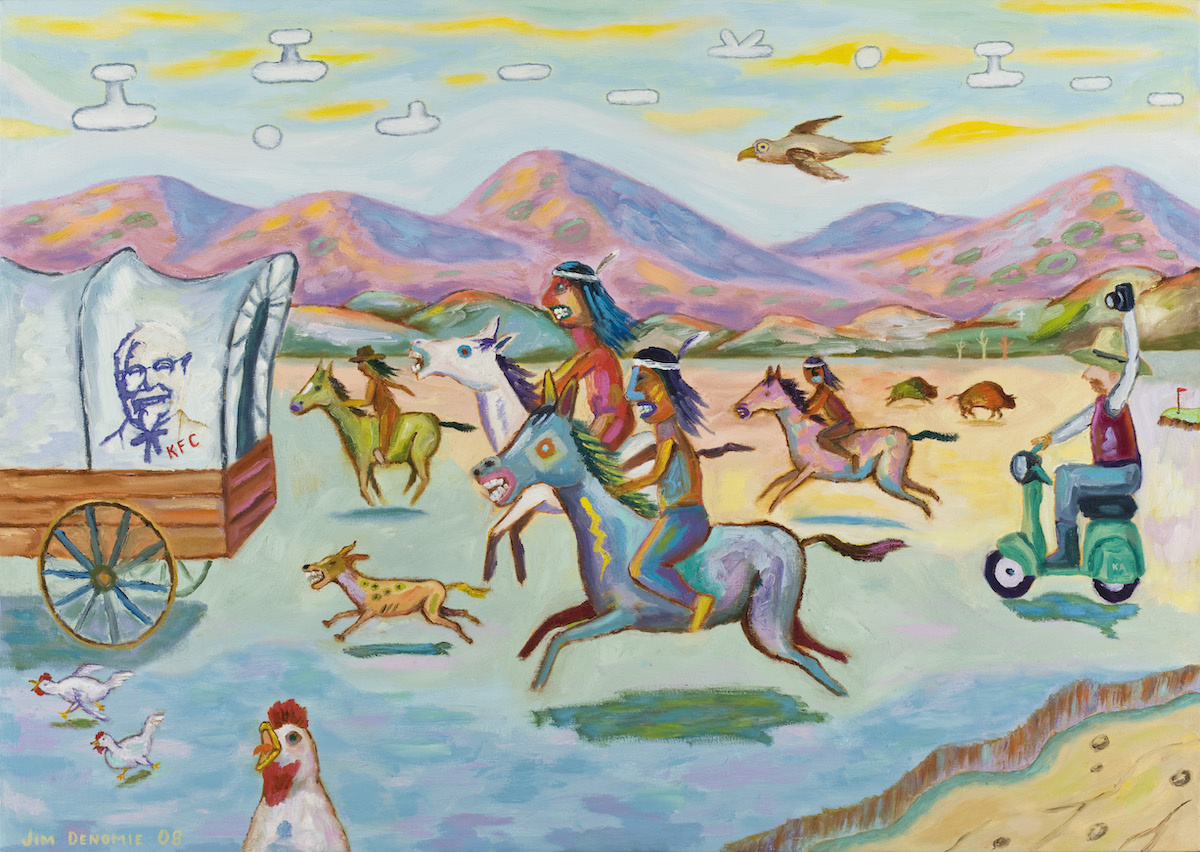
Jim Denomie, Edward Curtis, Paparazzi: Chicken Hawks, 2008.
©Jim Denomie Estate/Courtesy Bockley Gallery/Eiteljorg Museum of American Indians and Western Art, Indianapolis, Indiana
Curatorially, Smith alludes to just that with one wide wall on which two rows of works are hung zipper-style, with little space between each piece, creating a sense of closeness. Here, a Linda Lomahaftewa (Hopi/Choctaw) lithograph showing a Native figure communing with two birds appears below a colorful 2019 painting with a rosette at its center, Esoteric Vibration Landscape, by Mario Martinez (Pascua Yaqui Tribe of Arizona). The two hang so tightly that their corners nearly meet.
But this is more than a means of underlining collectivity. It is also a curatorial choice rooted in Native history—specifically the adoption of the 1887 Dawes Act, which grants the president the legal power to slice up Indigenous land for private ownership. Smith’s own checkerboard wall of art is not all dour, however. If anything, it is a celebration of the fact that Native artists can still come together, even in a country whose politicians have made attempts to keep them apart.
Since the show’s opening, on at least one occasion, the National Gallery of Art has been forced to contend land rights more directly. When the exhibition kicked off in September, one of the biggest objects in it was Creation with her Children (2017), a sculpture by Nicholas Galanin (Lingít/Unangax) and Merritt Johnson (who is not affiliated with a tribal nation) that features a figure wearing a pannier (or side-hoop) skirt of blue tarpaulin centered by pairs of hands tearing open the mouths of sharp-toothed creatures. Two weekends ago, the artists demanded its removal “due to US government funding of Israel’s military assault and genocide against the Palestinian people.” The museum obliged their request.
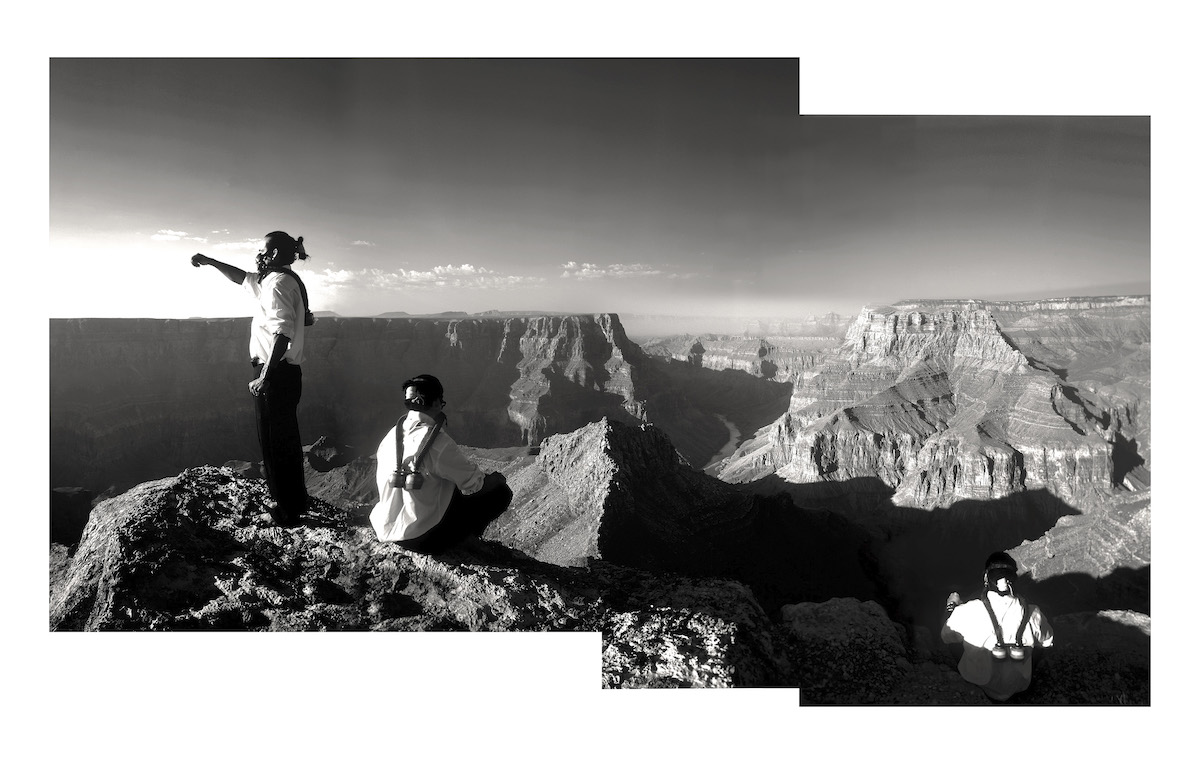
Will Wilson, Auto-Immune Response no. 2, 2004.
Courtesy the artist
That the museum had suddenly to contend with such a dispute taking place thousands of miles away speaks to how this show, focusing on the lived experience of Native Americans, touches on something more universal, something that reverberates far beyond this country. True to its title, this exhibition suggests that the land is more than just grass, dirt, rocks, and ranges—it also carries the memories of struggles of all kinds.
What might a landscape look like that accounts for those engagements while also moving beyond them? One answer comes courtesy of the fabulous painting Orchestrating a Blooming Desert (2003) by artist Steven Yazzie (Diné/Pueblo of Laguna, New Mexico/European descent).
In it, a man with his back to the viewer, à la the contemplative figures of Romantic landscapes from the 19th century, raises his arms before cacti in a flowered field. One of his hands holds a baton; on the other rests a motionless bird. All around him, daisies and roses rain down. A host of Western artists from Caspar David Friedrich to Ansel Adams have depicted resplendent vistas like the one he faces, highlighted by cloud-capped mountains and a pink sunset. Yazzie too, in taking up the genre, affirms it as his own. After all, this land was made for him.

